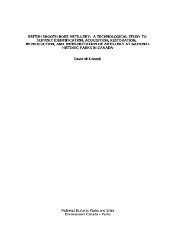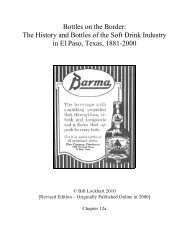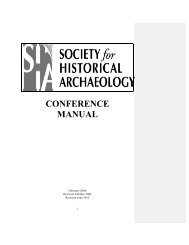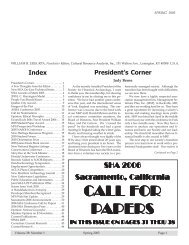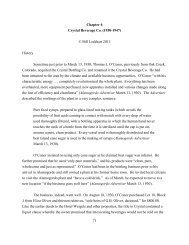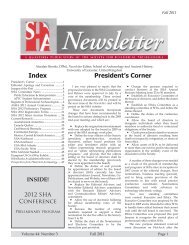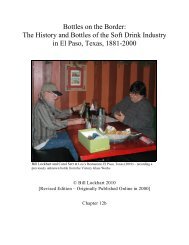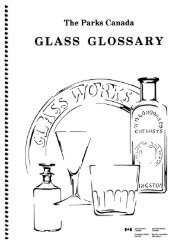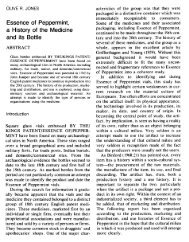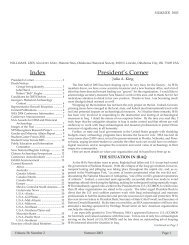1242 Codd Bottles revised
1242 Codd Bottles revised
1242 Codd Bottles revised
Create successful ePaper yourself
Turn your PDF publications into a flip-book with our unique Google optimized e-Paper software.
Munsey ––––––––––––––––––––- CODD BOTTLES ––––––––––––––––––––– Page 4<br />
(Fig. 4) Wlliam Henry Hamilton Trood, "A Surprising Result," 1887<br />
–––––––––––––––––––––––––––––<br />
<strong>Codd</strong> Bottle<br />
The problem with the pointy-ended Hamilton<br />
bottle was its tendency to roll off counters or shelves. The<br />
problem was solved, in 1872, with the invention of the<br />
<strong>Codd</strong> (marble-in-the-neck) bottle by Hiram <strong>Codd</strong> (1838-<br />
1887) – (Fig. 5) from Bury St Edmunds, Suffolk, England<br />
(Fig. 6).<br />
<strong>Codd</strong> in his early working life became a<br />
mechanical engineer. At the age of 23 he worked as a<br />
salesman for the “British and Foreign Cork Company”<br />
where he recognized a need for better bottle filling<br />
machines and a new type of closure to alleviate the need<br />
for the very items he sold – corks.<br />
In 1862 he conceived and patented a device for<br />
measuring the flow of liquids; in 1870 devised and<br />
patented a machine for filling bottles. To understand the<br />
mineral water trade better and to prove the worth of his<br />
(Fig. 5) Hiram <strong>Codd</strong><br />
1872 Patent bottle



